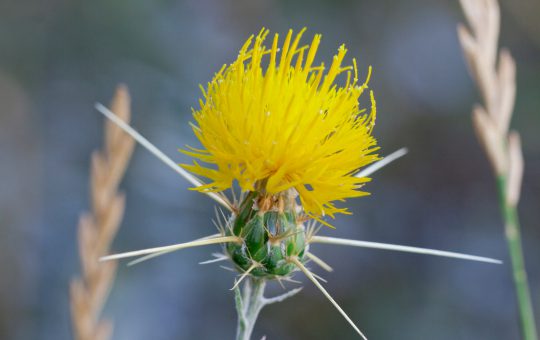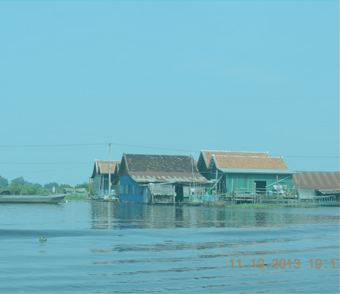The Natural Heritage Institute’s California Water Program is led by Dr. Gerald H. Meral, who until the end of 2013 served as Deputy Secretary of the California Natural Resources Agency. At NHI, Dr. Meral is building a suite of new projects to forge consensus solutions to some of California’s most intractable water management problems, including implementation of the Delta Fix (tunnels) and EcoRestore programs in the Sacramento-San Joaquin River Delta, sustainable management of California’s groundwater resources, realigning public funding for delta levees, and promoting water conservation.
“The Natural Heritage Institute proposes to demonstrate the water supply benefits of removing Yellow Star Thistle from the Sacramento River Watershed.”

Yellow Starthistle (YST) covers at least 14% of California (14 million acres), and continues to expand.
YST is not suitable for grazing livestock, and toxic to horses. Bees make good honey from YST, but otherwise millions of acres of California are being lost to wildlife and ranching uses. Losses to ranchers from YST are in the tens of millions of dollars a year in lost productivity and control costs. YST on millions of acres of BLM, Forest Service, National Parks, and various state lands often go untreated or barely treated due to the costs of control.
YST has been shown by UC Davis researchers to use far more water than the annual grasses it usually displaces. YST uses up to 0.36 acre feet of water per acre more than annual grasses. This is because it is very deep rooted (up to 2 meters or more), and is highly efficient in water uptake. UC Davis researchers have estimated that up to a million acre feet of water could be saved if YST could be widely controlled. This water would stay in the ground, maintaining groundwater levels, and eventually appearing as surface water in streams, providing benefits to fish and humans.
Coinciding with the spread of YST in the Sacramento Valley, expected flows in streams tributary to the Sacramento River have declined in the past 20 years. While cause and effect has not been established, it is not unlikely that YST is cause of this streamflow decline.
California must seek additional ways to make better use of the precipitation it receives. One way to do so is vegetation management, such as through the removal of dense stands of weeds which use more water than other native and non-native vegetation, such as annual grasses.
The cost of controlling YST averages $25 per acre. It can be controlled by burning, mowing, grazing by goats, and through chemical means. Once it is controlled, spot control is necessary on an annual basis at $5 per acre.
If YST is controlled on heavily infested lands, the cost of the water saved would be less than $20 per acre foot on a long term basis. This compares to up to $400 per acre foot for most conservation programs, more than $1000 per acre foot for new surface and groundwater storage, and up to $2000 per acre foot for desalination.
To convince water managers that these savings are real, the Natural Heritage Institute has raised funds to hire Dr. Joseph DiTomaso from UC Davis, an internationally recognized expert on YST and its control; and Dr. Mike Deas, a highly respected hydrologist. They have designed and are implementing an experiment on four adjacent small test watersheds, to compare the water savings on controlled and uncontrolled watersheds. In the two controlled watersheds YST will be removed, while it will be allowed to remain on the other two watersheds.
After an initial year to measure water runoff baseline, YST will be removed in two watersheds. Then surface and groundwater quantity and quality will be measured on all watersheds for three years, and the water savings will be determined. If the savings are significant, a statewide YST control program would be designed. It would be implemented by water agencies who wish to use the water savings.
Nothing humans can do has greater potential to produce affordable new water supplies in California than Yellow Starthistle control.

